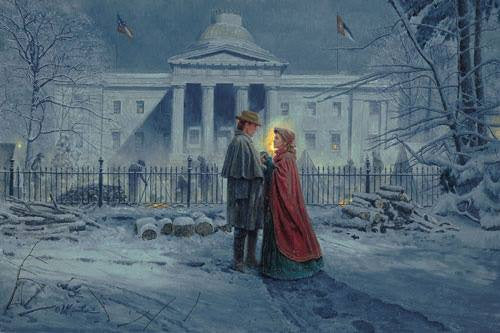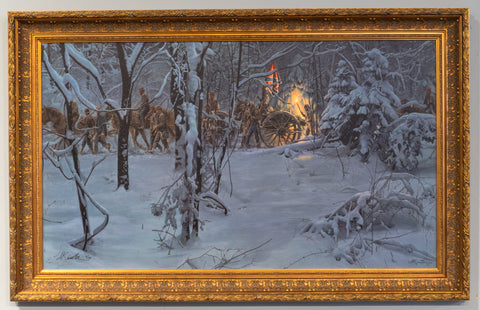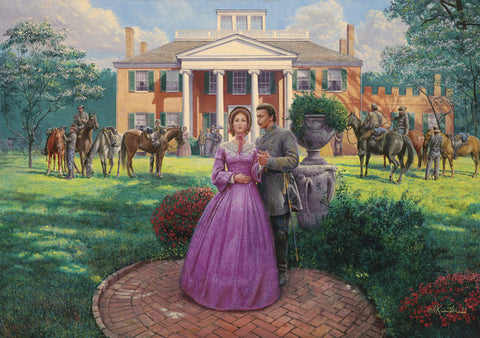Capitol Farewell
by Mort Kunstler
Raleigh, North Carolina, February 5, 1863
Like many Southern states, North Carolina’s entrance into the American Civil War began at its Capitol. On May 20, 1861, state legislators signed the Ordinance of Secession in the House of Commons chamber. This officially ushered the Tar Heel State out of the Union and into the Confederacy. Following the final signature, a handkerchief was waved from the window of the office of the Speaker of the House announcing the state’s secession to the crowd below. A great celebration erupted on the building’s Union Square, including a 100-round artillery salute and music from a military band.
According to a local legend, the first blood shed for North Carolina during the war occurred that day as a bulldog, startled by a gun salute, severely bit one of the artilleryman of the First North Carolina Artillery, also known as Manly’s Battery. For the next four years the building hosted the state’s wartime legislatures. Although Governor Zebulon B. Vance maintained an office in the southwest suite on the first floor, the Capitol building served the war effort far beyond a meeting place for politicians. It was also used as a supply depot and a gathering place for the ladies of the town who met in the rotunda to fashion uniforms, haversacks and bandages. Confederate troops were brought to the capital city for training and then sent to the front lines. They often used the Capitol’s surroundings for encampments. The building itself became a fixture in the hearts and minds of the soldiers and civilians who busily occupied its halls and grounds.
In April of 1865 Raleigh and the Capitol witnessed the war firsthand as General William T. Sherman’s army, led by Judson Kilpatrick’s Third Cavalry Division, marched into town and began the occupation of the city by Federal forces. According to the North Carolina Office of Archives and History, “The Capitol itself was spared the total destruction that had befallen the old statehouse in Columbia, South Carolina. Before retreating westward, Governor Vance sent a peace delegation, led by former Governors David L. Swain and William A. Graham, to Sherman asking that the Capitol, with its library and museum, be spared. As a result, the Capitol suffered little damage.”
Despite a reprieve from excessive destruction, North Carolina’s official copy of the Bill of Rights was stolen by an Ohio soldier. That document would not be returned to the state until 2003, when it was surrendered to the North Carolina branch of the U.S. Marshal’s Service. On April 14, 1865, General John A. Logan organized the Society of the Army of the Tennessee, one of the country’s first post-war veteran’s organizations, in the Treasurer’s Office on the first floor. From then on, the North Carolina State Capitol in Raleigh became a place of healing as the residents of the city
| Style | Image Size |
| Archival Paper | 17" x 25 1/2" |
| Signature Edition | 18" x 27" |
| Classic Edition | 21" x 32" |
| Premier Edition | 26" x 39" |
| Collector's Edition | 37" x 56" |






Share this item: